15. September 2021
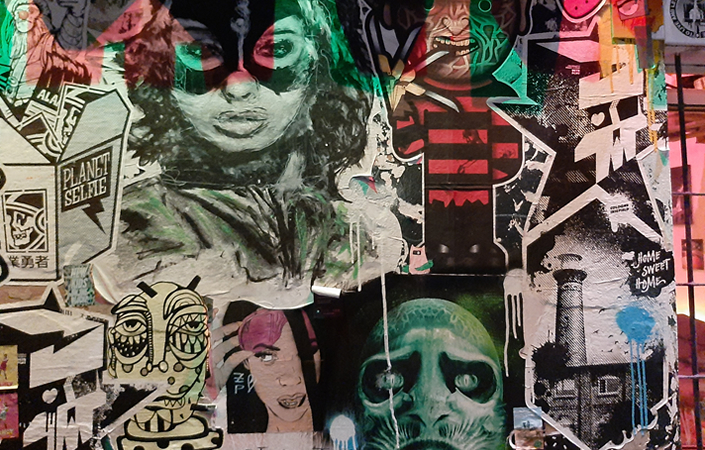
Almost all companies have, now quite some time ago, dealt with their values, often writing them down and distributing them throughout the company. A significant source was often the memory of the founders’ »philosophy« and their words, often late words. The values formed the backbone of the organization and complemented the vision processes. Guiding this was a quote from Odo Marquard: »The future needs origins«. Today, they are a foundation of the »Purpose« processes. It is always about the answer to the question: Who are we and who and how do we want to be?
Now these values, which are often understood as temporally stable, even supratemporal, are actually values of an old world. And so the question arises: Do we need a new value process? And should it this time be designed less top down and more with the inclusion of the socio-ecological environment?
Values, shared, are all the more important the more autonomy and self-control an organization strives for. They are an indispensable part of indirect control, giving the relatively freely operating units a common foundation and thus increasing the possibility of expanding degrees of freedom and reducing hierarchical, direct control.
The importance of new, participatory value processes can be clearly seen in the topic of diversity. In an attempt to increase the diversity of a company, we are designing inclusion programs today, and although we want the difference, the background logic is often »to fit in«. The contradictory message is: be different, but please be within our culture. So we want a discrimination-free coexistence in the context of our culture, culture of origin. If we really want to be a global company and truly a common house for »diversity«, the old values will have to undergo an intensive revision. This must be done in such a way that diversity is not merely thought of and included, but in such a way that a common identity of differences is formed.
New values emerging from the diverse collective could give members of other life concepts, other cultural origins and other life stories the opportunity to find themselves reflected in the values of their company. Then it would also be justified to speak of global companies and not only of globally represented companies.
SYNNECTA has described a process with TheQuestBySynnecta, which can be an important guide here.
Rüdiger Müngersdorff
5. July 2021
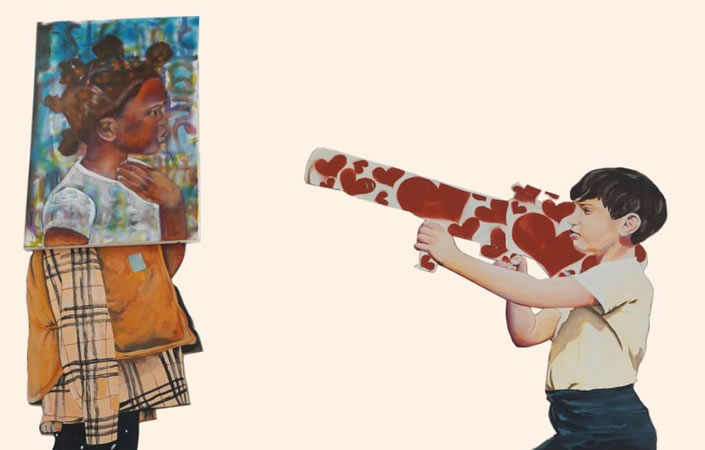
Group dynamics are at the root of all work with social systems. There is a myriad of methods to use in trainings and workshops in order to cover these dynamics. They are effective as long as the issues at hand remain in the foreground and in everybody’s joint focus. However, we frequently find what we call relationship topics gaining ground and hindering progress on the so-called factual topics. Nowadays, as positivity is the prevalent group norm, it has become the habit to not only methodically isolate these dynamics, but in fact to expel them from the groups’ communicative dynamic. At the same time, we know that groups are such rich environments only because of the difference, the range of perspective, opinions and attitudes. This wealth is only accessible where emotions are also admitted. Emotions are too frequently considered dangerous and disruptive, even though they are the very thing we need in order to give difference and diversity scope for effect. We are often lacking the required emotional sovereignty. The habit of ignoring and suppressing group dynamics becomes more pointed in the context of virtual, digital work. At first sight, all conflicts, differences and blind spots seemed to have disappeared in that context, but by now it is apparent that they were in fact only hidden – one sign of this is not least the dwindling enthusiasm in virtual conversations. Another indicator for the fact that it is no solution to ignore the emotional side is the growing number of psychological illnesses and burn-out symptoms reported by the health services.
I often see mindset work concentrating on the individual. There is a promise that we can break free of the binds of mindsets we have collected during our life histories and thereby develop greater degrees of freedom in our actions. That does not go far enough. Mindset work also takes place with a person – it happens within a relationship, in a social situation. This social scene is a fundamental aspect of its efficacy. Taking a closer look, coachings in small groups turn out to often be more efficient than one-on-one relationships, because they work in a much more elaborate social space, a richer scene. Group dynamics are so very important precisely because productive work on the collective mindset is work with the social scene. However, those very skills on group dynamics are often lacking: mindset work that relates to collective understanding and cultural factors is still in its infancy.
We live and work in groups – we are always in a social situation. This setting inspires us and opens our own necessarily limited a priori understanding. While it does create openness, however, it also draws boundaries. The boundaries that are typical for groups are often called groupthink. The usually subconsciously effective norms and rules of behaviour within groups define a space or a scene that effectively limits individual impulses and perspectives. The multitude of individual voices is reduced within groups.
Groups have the potential to be enriching, to have many voices, many facets, and therefore to be able to perform better and adapt more easily, to be more agile. It is rare that this potential is productively tapped. Why is that so? Groups very swiftly form a system of norms and assumptions, values and expectations, which effectively reduce the scope for individual perspectives. Social beings have a need, the necessity to belong, to be part of a social system and thereby also a fear of not belonging, of being excluded. There is great pressure to fit in. We often find ourselves succumbing to that pressure subconsciously or under the cover of excuse stories. Without consciously wanting to, we act, speak and engage in a way we believe to be the group norm.
In doing so, we are robbing the group of its greatest potential: the diversity, the differences, the strangeness and otherness, in short: its individual perspectives. Watching groups, we always see that a limiting norm wins out. The simplest methods in use to that extent are to point out a lack of time or, currently very much en vogue, the request to keep displaying a friendly, accepting Yes Set.
The collective mindset, the organizational development or group culture have an effect on individuals in their belonging to groups and organizations: reinforcing, weakening, shifting. The collective is often more persuasive. Whereever we are dealing with a priori assumptions that shift an individual’s tenets, we must work with the social scene in which that human being lives and works. Individual actions are greatly defined by the scene in which we are set or have set ourselves. Groups provide us with a scene as well as a script that tells us how to play that scene. We seek to niche ourselves within that script: to find those roles which we consider most like to to give us a good position within the community of this group or this social organization. In doing so, we frequently abandon our own personal wealth without even noticing it and are by that very act robbing the group of its own greatest potential: the difference, the individual perspective.
We all have an individual a priori understanding with which we encounter the world and which is each our very own. Where we are part of a social system, we also have a collective a priori understanding that we share with others, with our group. The collective mindset (a priori understanding) is often the more dominant one. The desire to belong and at the same time the fear and shame of exclusion lead us to adapt. We are often not aware of the price we pay for that until the evening, when we are alone. (This is why it remains vital to include at least one evening and one night in workshop designs. They provide the spaces where impulses emerge that can trigger movement. The prevalent abbreviation of meetings, trainings and workshops is one contributing factor for the dominance of the collective norm and the exclusion of difference.)
The collective and the individual mindset are connected. They form a dynamic system and tend to balance out in a limiting stability. Effective work on the individual and the collective mindset works at this balance, opens differences and therefore makes movement possible. At the outset, it is important to perceive the scene that is provided by a group; this makes it possible to engage in different versions and therefore facilitates that differences are made visible and can be discussed. The key to change is opening the group’s expressive sphere, perceiving cracks in the group’s evaluations. This is where the potential of the members can enter group communication and have a differentiating effect. For that to happen, the people must be ready to reveal themselves and develop a setting of trust where differences are accepted (psychological & emotional safety). Group dynamics are about trust as much as the readiness for confrontation. Anyone who supports cultural change in organizations knows that sustainability can only be achieved when both poles of the balance, individual and collective, are worked on at the same time.
This is a plea for group dynamics, then. Any effective work with the mindset concept necessarily demands a deep familiarity with group dynamics, the lived roles within the groups and their mutual influence is essential.
Group dynamics go beyond moderated, directed conversation. They open up towards a wealth of individual, diverse, multitudinous perspectives.
At the same time, this path leads to the ability to repeatedly take decisions that are fit for the contingency and complexity of our modern world of life and work. Wolfgang Hegewald has described what we need in order to achieve that: »(…) that art and society base themselves on difference, on a curiosity about the Other and a sympathy for what I am not, a desire for change, for rhythm and distance. That my heart beats for my mind: an erotic experience.«
#myndleap #mindset #mindsetcoaching #organizationaldevelopment #synnecta #denksinnlich #collectivemindset
Rüdiger Müngersdorff
This article was first published at www.myndleap.com
© Artwork: Mitra Art, Mitra Woodall
28. June 2021
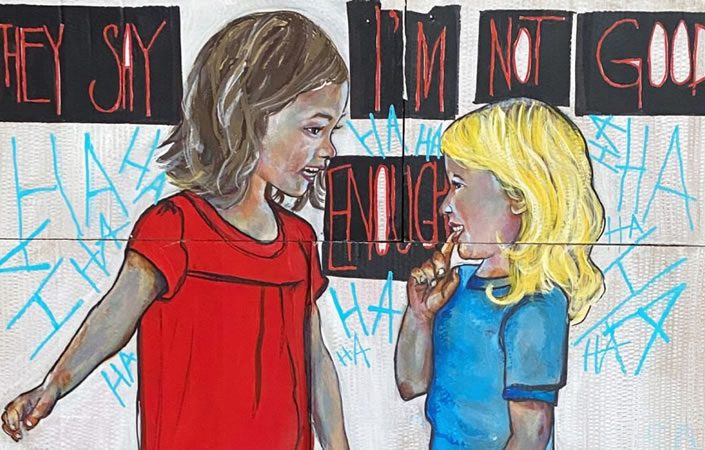
When Arnold Gehlen described humans as insufficient creatures, he furnished this label with a positive interpretation. The human ability to design our life world grows out of the physical insufficiency of humankind, essentially establishing a dominance within it and an ability fashion it out of the very needs of that insufficiency. This anthropological approach is juxtaposed by a psychological definition of insufficiency in the ontogenetic development of humans with messages that communicate to the individual: You are not good enough! In this case, the state of insufficiency is often frozen in time, arrested without achieving the turn toward design, domination and overcoming. The messages of lack result in resignation, doubt, giving up or an eternal fight against the power of the early messages.
Messages of insufficiency are part of our societies’ cultural attitudes. They play an important role in families. In biography-based work that addresses the proverbs children and young people remember having often, time and again, heard from important attachment figures, it becomes apparent how these messages evolve into attitudes and tenets. ‚Life‘s no picnic‘, ‚No pain, no gain‘ or the at first sight less threatening ‚No sweet without sweat‘: they all convey the same message, namely that the recipients are not good enough, need to deliver more, pull themselves together. The world is not a place of experience and blissful design, it takes the shape of a permanent practical test. There are indeed also messages of power, fulfilment and an awareness of one’s own potential. While both facets are there, the balance is often not right.
This missing balance that is so frequently encountered is often met with the recommendation to form formulaic positive resolutions. Although this can have a positive and stabilizing effect on individuals, it is clearly not enough.
Mindset work as realized by MyndLeap addresses the phenomenon where culture, collective mindsets and individual mindsets meet and develop particular dynamics. Any work that focuses only on the individual and that individual‘s belief systems will not alter the ties between such normative cultural messages and the individual’s related tenets.
Ideally, these very ties will reveal differences and thereby open up a space where an altered narrative can emerge. This altered narrative sees that mistakes are elements of innovation and can thereby change the perfectionist norm so that individuals can find a space in which to fashion their own designs, interacting between the fields of ‚I can do it‘ and ‚I am not good enough‘. The narrative that mistakes are an integral part of the process of learning and growing is still strongly juxtaposed by the narrative that mistakes are wrong in themselves, must be avoided and constitute a nigh-on moral failure. There is often a mutually reinforcing symmetrical relationship between collective and individual tenets. This relationship can unfold a great reciprocal power where the belief systems communicate safety, the ability to design, courage and the joy of a challenge. The opposite is true, however, when tenets of insufficiency reciprocally reinforce each other.
Looking back at the origin of the mindset concept, it becomes apparent once more that it really addresses specific assumptions towards the world that are inherent to social systems and predate any concrete experience. It began by focussing on social classes and moved on from there to the investigation of whether there are typical national mentalities. The pivotal question for us today is in what way the mentality or the dominant collective mindset have a significant effect on the enthusiasm and the ability to perform among company employees. While individual mindset work can be a relief for each individual and often shows a path out of a situation that stabilizes and reinforces a person‘s own awareness of their insufficiency, organizations must tap into the collective mindset here. This is the lever for change. There are tried and tested methods that permit groups as well as larger organizations to work in such a way that it is immediately apparent how the collective mindset works and which normative messages it sets. The individual beliefs work within those normative messages. As soon as the connections are made apparent, it is possible to begin a process that lets in other messages and eventually makes them effective by sustainable, mindful awareness and integration. Cultural patterns establish themselves by repetition, modelling and imitation. The work on the collective mindset as designed by Myndleap leads from an awareness of insufficiency to an awareness of potential. It can therefore tap into a culture of potential within which each person can take it into their own hands what to make of that potential.
#myndleap #mindset #mindsetcoaching #organizationaldevelopment #synnecta #denksinnlich
This article was first published at www.myndleap.com
© Artwork: Mitra Art, Mitra Woodall
21. June 2021
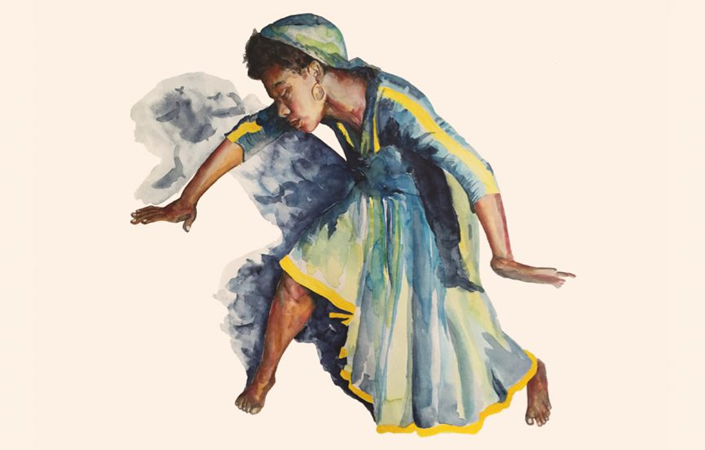
The concept of mindset and tenets has proved useful in the coaching context. It effectively supports cognitive flexibility and brings coachees into contact with a wider range of tools to actively meet the challenges delivered in their life and work settings. It is good to see that many schools of mindset work are moving away from the normative concepts that hide behind such names as growth mindset and agile mindset. While those used to be and still are often sold to organizations, other phrases – like mindset plasticity and flexibility – make it apparent that what’s really at stake is an ability to react to situations rather than to loyally follow old scripts, as transactional analysis would put it. We are dealing with degrees of freedom and a credo that we know from the very roots of psychoanalysis: Awareness widens the range of possibilities – the possibilities to be able to react and act differently.
Despite this dynamic development in the mindset scene, the sales brochures continue to contain some blind spots – not everywhere, but still frequently enough. I have pointed out the roots of mindset in earlier articles (@myndleap @rüdigermüngersdorff @synnecta) and have sketched out a much wider basis for this approach. In the following I want to point out two aspects of mindset work that have not been fully tapped into.
Firstly, I keep coming across the phrase »emotionally charged belief sets«. As so often in Western culture, our fixation on cognitive structures and contents demotes emotions to secondary events that only serve to charge something. Psychotherapy has throughout its by now quite long history taught us at least that emotions are in fact dynamics in their own right that must be perceived and talked about as such. All research into the effectiveness of psychotherapy and coaching has shown that the most important effective factor is the relationship between the participants. This has to do not least with the fact that emotions are perceived and felt in the relationship between people. Great value can be ascribed here to the discovery of transference. These phenomena do not merely describe a misperception, but shape the very place where emotions take place before they can be translated into cognitive events or speech. The fixation on methods in most mindset schools dramatically underestimates this aspect of the work. In my projects in the Asian sphere I talk not only of mindset but also of heartset. This meets with great approval in those cultures and provides an approach to elevate emotional as well as cognitive flexibility. Repetition compulsion – the very opposite of flexible, appropriate perception and action – is not primarily tied to a structure of insight, evaluation and decision-making, but to an emotional reaction to the inner and outer context: a scene. This is where links are made and limits drawn, where beliefs attain the power of their message to guide actions. As long as we are unable to talk about the scenic feelings of fear, shame and guilt (qualities of transference and counter-transference), mindset work will not be able to deliver more than temporary patches.
In the face of the cognitive fixation and belief in methods that is inherent to many mindset schools, I keep returning to the same question: Who ever claimed that you think with your head rather than with your whole body? We cannot perceive our emotionality without encountering our physical side; as long as we do not experience the heartset, our mindset work cannot penetrate beyond the surface.
The second major fault of mindset discussions is their blindness for the conditions that are material to effective organizational development. While we are witnessing a cultural turn or a sociological turn in the cultural sciences, the soft consulting scene is experiencing the growth of a psychological approach. The statement that ‘I live my life’ holds as much truth as the claim that »My context lives me«. Prevailing resilience concepts call upon the individual to change, and the same is true in organizational development. This approach is based on the conviction that success will follow once all employees have developed a growth mindset, an agile mindset or a whatever mindset. There is a belief that this is the only path to changing our culture and supporting our organization goals. Practice shows, however, that this is an illusion. All organizations have a specific culture: their collective mind- and heartset, if you will. This culture is reproduced within the organization even when all its people are changed. (It is a deflating experience indeed to see a manager behaving so differently during training than in their company context.) In individual mindset work it seems to be apparent that beliefs are localized in the brain – although I would locate them in the body. In organizational development, we need to ask that old question about culture: where and how do we locate the consistent cultural patterns in organizations? Cultural sciences have a number of approaches to meet this question. These need to be integrated into organizational development. They are mostly relational and can hardly be captured with a classic thought pattern of cause and effect. It is about creating visibility for the web of relationships within which perception, decision-taking and action take place. As in individual work, the first step is awareness. These thoughts return the concept of mindset back to its origins: research into mentality in social classes and groups. It grasps how mindset work can help us understand the ties of collective behaviour, while at the same time opening a chance for emergence. Using Robert Musil’s words, we could say that working on the collective mindset means to add a sense of reality to a sense of possibility.
#myndleap #mindset #mindsetcoaching #organizationaldevelopement #synnecta #denksinnlich #collectivesmindset
This article was first published at www.myndleap.com
© Artwork: Mitra Art, Mitra Woodall
18. March 2021
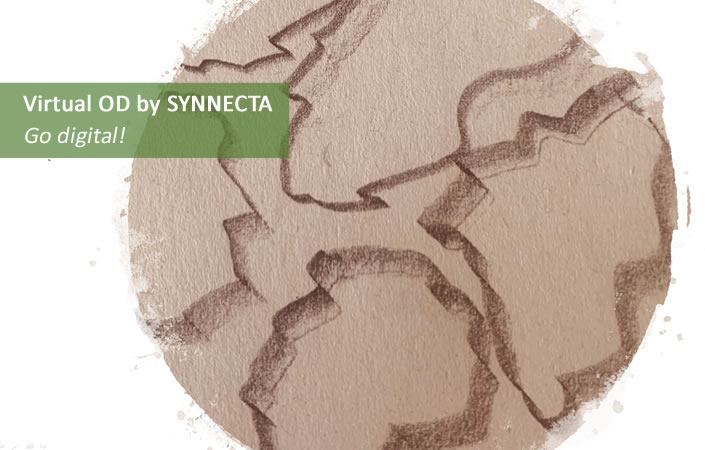
The digital world is a great source of new potential for organizations to foster a cultural change that is more democratic and more tuned into the future in order to address the challenges of an increasingly complex and dynamic world. In future, culture will be even more important in organizations. Culture fills gaps that cannot be bridged by structures and traditional processes alone.
Virtual organization development – Virtual OD by SYNNECTA – provides sustainable support to this aspect.
Cultural change aims to strengthen engagement, heighten performance, improve collaboration, make effective use of diversity and become more agile. It aims for the sustainable development of an organization. Only those organizations that engage in such continuous development will in the future be able to deal with change swiftly and appropriately and maintain long-term success.
Cultural change can take place from two directions
Approach 1: Central perspective – one guiding theme creates a pervasive common notion that is delivered ‘top down’ in order to integrate differences (different characteristics, metaphors, …). Further along, we see the development of islands that network self-sufficiently and influence the central pervasive message.
Approach 2: Synchronous-lateral perspectives – Useful aspects emerge automatically. Peripheral perspectives emerge laterally and enable the required multi-perspective viewpoint from the beginning. Resonance and successful action foster the emergence of new structures, which in turn resonate again and thereby reinforce each other (spiralling development) – self-sufficient organizing.
This is where Virtual OD by SYNNECTA opens up great opportunities.
Both approaches take place in conjunction in everyday Organizational Development, but are given different emphasis.
Employee community and identification with the organization serve as social glue. An organization’s strong core identity prevents it drifting apart. Communication within a continuous dialogue that provides emotional touchpoints is an essential guiding element here.
Organizational Development today: limits and challenges
Cultural transformations traditionally begin at the »centre«, meaning from an organization’s headquarters and spreading from this »epicentre« to other areas and through the entire organization in order to become »global«. The direction of change therefore goes from »central« to »local«.
In this process, thinking and acting come from the central perspective of the headquarters from the beginning. This means that the process is asymmetrical from the very start, with a decline from the centre to the periphery. Consequences can include:
- Lack of identification in the peripheral areas that are not part of the centre.
- Weaker acceptance and lacking commitment.
- Difficulties guiding the transformation on global and international levels.
- Varying depths of effect and speeds of implementation between centre and regions.
- The differences between centre and regions stay in place and may even be reinforced or increased (insider/outsider thinking).
- Important perspectives and potential from the periphery is not sufficiently included and utilized.
Successful cultural development always includes self-organized dynamics and therefore requires an approach »across the field« that departs from the notions of »top-down« and »bottom-up«, which reinforce a hierarchical mindset. The real force of renewal is therefore found in the periphery. The digital sphere provides an opportunity to strengthen or improve these aspects.

Digitalization can foster a new Organizational Development
Any organization essentially has the implicit knowledge to be sustainable for the future. However, it is often not understood how to explicitly use this knowledge. Virtual OD by SYNNECTA shifts the dynamics from central to local. At the same time, it provides an opportunity to leave to dominant notion of »top-down« and »bottom-up« behind. Organizational Development at eye level!
The three classic levers of Organizational Development are creating meaning, changing patterns and establishing commonalities. These three levers can be expanded by Virtual OD by SYNNECTA. It allows for the guiding theme to be disseminated with greater conviction (see approach 1), but even more importantly, to design self-sufficient organization more effectively (see approach 2).
The greater efficacy of virtual organizational development is mostly created by the following aspects:
- Time and space are opened, so that simultaneous activity is possible and asymmetries are eliminated.
- Synchronous and asynchronous events/communication/collaboration take place at a global level.
- Fast and high degree of networking among people in the digital space.
- The power of weak joints. Weak joints are the basis of prolific cooperation. Virtual OD by SYNNECTA uses the power of weak joints.
- More outcome thanks to focussed collaboration.
- A greater degree of self-sufficient organization, stronger interaction and involvement.
- More effective dynamics permit themes to spread virally faster.
- Creation of virtual communities (of practice).
- Greater use of creative tension through multi-perspective working in the digital sphere (using diversity).
What moves you?
- Remote work will stay with us!
- How will the dominant position of the headquarters be reduced?
- How do we achieve greater and more sustainable employee engagement?
Contact us!






